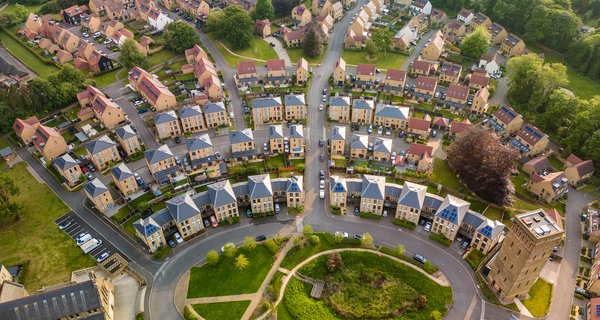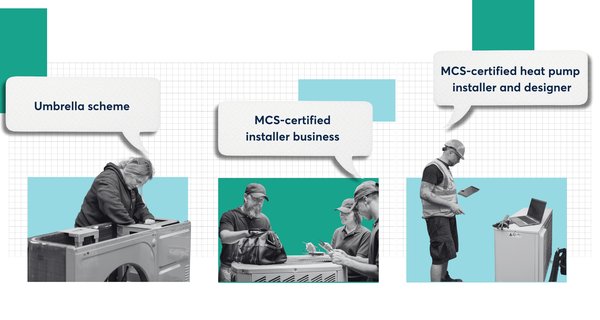In 2022, Newcastle City Council and Equans (a low-carbon energy service provider) collaborated on a pilot, installing Wondrwall infrared, intelligent heating systems in two terraced council properties.
The Council was interested in piloting the Wondrwall system as it provides a low-carbon alternative to traditional convection heating and help it transition its housing stock from gas to low-carbon heating. Additionally, the Wondrwall system combines a number of technologies aimed at reducing energy consumption and bills and can be fitted quicker than other low-carbon heating systems, meaning that properties can be retrofitted and made available to new tenants more quickly.
With this in mind, the pilot aimed to:
- explore the user experience of tenants using the Wondrwall system
- understand the suitability of Wondrwall technology for decarbonising council properties
- understand the effect the Wondrwall system has on energy consumption.
Nesta collaborated with Newcastle City Council, Equans and Wondrwall to provide independent qualitative research to evaluate the two households’ experiences of the new Wondrwall system throughout the autumn and winter of 2022/23.
This report aims to summarise Nesta’s findings of the users’ experiences and provide guidance for other social housing providers considering installing these systems in social housing or council properties.
The properties
The properties included in the research were two-bedroom terraced houses on the same street in Newcastle. The two houses had almost identical layouts. Neither property had any fabric improvements done prior to being fitted with the Wondrwall system. The decision to not include any additional fabric improvements was made in order to better understand the performance of the Wondrwall system as a ‘like for like’ swap of the existing gas boiler system and to pilot the technology in houses that were representative of the council’s housing stock.
Property A was a mid-terrace house with an EPC rating of C and property B was an end-of-terrace house with an EPC rating of D (as of November 2021).

Image shows: a smart switch, a thermal battery for hot water (left) and residential battery (right) and ceiling-mounted infrared panels
The technology
Both houses were fitted with Wondrwall technology before the tenants moved in, which included: ceiling-mounted intelligent infrared heating panels, intelligent light switches, a thermal battery for hot water, a solar PV array, a hybrid inverter and a residential battery.
Infrared panels use electricity to create 100% radiant heat, which heats surfaces, objects and people directly. This means that, unlike traditional radiator based systems, they don’t rely on heating the surrounding air and have higher efficiencies than condensing gas boilers. However, given that electricity costs significantly more than gas, used by themselves, infrared panels could be more costly to run than a gas boiler.
The Wondrwall system combined a number of technologies aimed at reducing energy consumption and costs. The heating was controlled by an intelligent programming system that allowed users to schedule and heat zones individually. The system used motion sensors to detect room occupancy and automatically heated the rooms that were in use. The solar panels and battery storage aimed to help lower energy consumption further by generating energy and storing the energy created from the solar panels, as well as cheaper off-peak energy drawn from the grid. With this in mind, users could benefit from being on a special tariff such as Octopus Go or another similar Electrical Vehicle (EV) tariff that allowed them to access cheaper off-peak rates overnight to charge their battery.
By combining these technologies, Wondrwall claims to be able to bring down energy bills to about a third of those using a combi gas boiler (1).
The research
There is relatively limited understanding of the user experience of whole-house infrared heating systems, particularly in a social housing setting. Existing studies looking into the experience of social tenants with low-carbon heating technologies point to risks such as comfort-taking behaviours (where consumers increase their energy use because the heat is perceived as being cheaper), issues with not being able to heat rooms to the required temperature quickly enough and tenants being wary of using the controls without the assistance of their landlord. A 2018 report by National Energy Action recommended that infrared technology should not be installed in homes of those at risk of fuel poverty, particularly if their homes need to be continually heated.
To address this gap in knowledge Nesta conducted qualitative research and evaluated two households’ experiences of the new Wondrwall system throughout the autumn and winter of 2022/23.
The research aimed to investigate the tenants’ experiences of using the system during a heating season and explore their experience of:
- being introduced to the system
- adapting to and controlling the system
- managing the winter peak and thermal comfort.
This research did not focus on determining whether the system saved energy , as the small sample size would have compromised the methodological soundness of the results.
Nesta conducted at total of six qualitative interviews and two property visits with two tenants between August 2022 and March 2023 and one interview with the Wondrwall technical support staff member that had the most contact with the tenants during this time.
Throughout the six months of the trial, the participants’ engagement with the research as well as the onboarding process was low, as the tenants were often unavailable for interviews and appointments. While this did not majorly impact the research process (interviews were rescheduled), the low level of engagement impacted the running of the pilot, as both Wondrwall and the Council had difficulties onboarding and supporting the tenants, which, in turn, impacted their ability to use the system most efficiently.
(1) Modelled on a typical three-bedroom property with new build standard insulation and draught-proofing
Credits
Contributors: Madeleine Gabriel, Shaan Jindal and Katy King (Nesta)
Thank you to Newcastle City Council, Equand and Wondrwall for their feedback and support.
Photo: Daria Nepriakhina on Unsplash
This report is part of our policy library for decarbonising home heating
Explore the library to learn more




